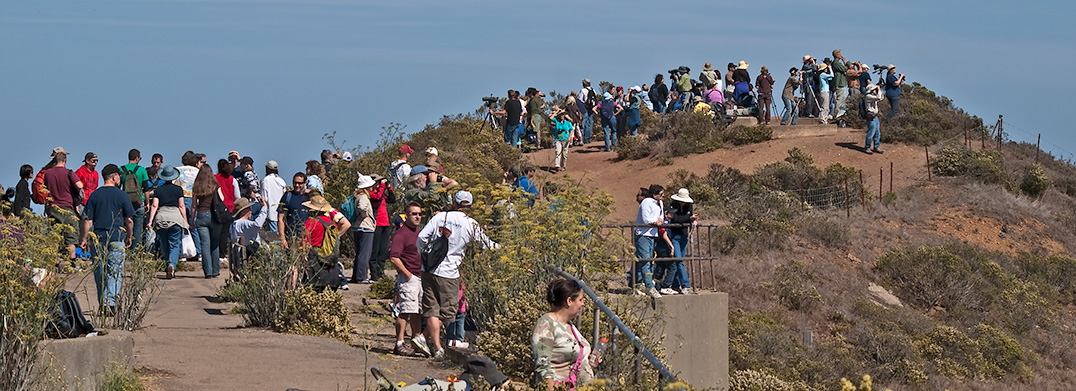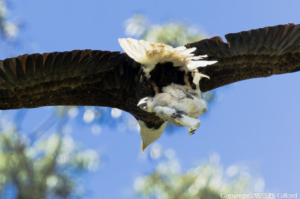2009 marks the 25th anniversary of the Golden Gate Raptor Observatory (GGRO), the Marin-based organization that tracks the movements of birds of prey during their annual migrations over the Marin Headlands. Since 1984, more than 1,500 volunteers have logged 40,000 hours alongside GGRO staff and outside scientists to tabulate, band, radio-track, and otherwise monitor raptors along one of the most trafficked migratory routes in the western United States. Along the way, GGRO has tallied more than 580,000 individual raptor sightings, and contributed immeasurably to our understanding of these predatory birds and the ecosystems they shape.
The GGRO’s patient accretion of data has revealed a picture of the lives of migratory raptors that turns many blanket scientific assumptions on their heads. For one thing, says Allen Fish, GGRO’s director for nearly the entire quarter century, migration paths through the Bay Area are much messier than the standard south-in-winter, north-in-summer model. Driven more by changing prey densities than by major swings in temperature, raptors have been tracked heading east, staying in one area year-round, and even doubling back to perform a reverse migration. Additionally, local geography conspires to funnel the flow of migratory birds right over GGRO’s Hawk Hill facility, allowing them to count a significant proportion of all the migrating raptors in California. This finger on the pulse of raptor movements has provided excellent data on how population sizes change over time. And that, Fish says, is the such a long-term record is so uimportant. “It’s not that we discover something exciting every year, but over the course of five, 10, 20 years, we discover a lot.”
The GGRO’s techniques have become increasingly refined, as has the focus of its research. “In 1985, we had really simple questions: how many [raptors] are there, and where are they going?” Fish says. “Today our questions are better.” These newer avenues of research include how raptors read prey concentrations (for example, by seeing the UV rays reflected by rodent urine), how to combat the problem of rat poison (which can have devastating consequences for predators like raptors), and determining how flexible different species may be in the face of climate change.
To tackle these questions, GGRO volunteers have expanded their toolkit beyond simple binoculars and leg bands and have begun radio tagging birds to track them across country, staking out nests to observe breeding and parenting behavior, and taking blood samples for genetic surveys. The latest innovation is the satellite tag, which is just becoming light enough to track nearly anything over long distances and periods of time.
Of course, all those volunteers are drawn to the program for more than just the science. “I’ll give you the standard line, which is that raptors are a good barometer of environmental change, because they’re at the top of a food pyramid and need clean food sources and open spaces to survive,” says Fish, “but really, they’re just fascinating animals.”
Fish’s lifelong fascination with raptors began with his visit as a child to the Coyote Point Museum and a “lovely” great horned owl. It’s this charismatic presence, he says, that engages so many people with GGRO’s work. Once in the program, volunteers find themselves part of an extended family of citizen scientists, all driven by the same visceral fascination, and it’s a bond that can be deeply satisfying for everyone involved. “This work is great for nature,” says Fish, “but it’s doing an immense thing for humans.” Once hooked, volunteers tend to stay hooked: more than a quarter of the volunteer corps has been at it for at least a decade.
As GGRO embarks on its next 25 years, volunteers and staff will keep doing science in much the same way they have for the last 25: by watching raptors, and keeping careful records of what they see. Though perhaps unglamorous, the process of counting birds as they wander back and forth with the seasons provides invaluable information in the fight to secure a future for raptors everywhere. Borrowing a phrase from a university course syllabus, Fish asks, “How can you save the environment if you don’t know what it is?”
The Golden Gate Raptor Observatory is celebrating its silver anniversary with an open house this Saturday and Sunday, October 24-25, 2009. Activities include banding and radiotelemetry demonstrations, presentations on the results of GGRO research, and crafts for kids. No registration required–visit http://www.parksconservancy.org/our-work/ggro/ for details.

.jpg)





